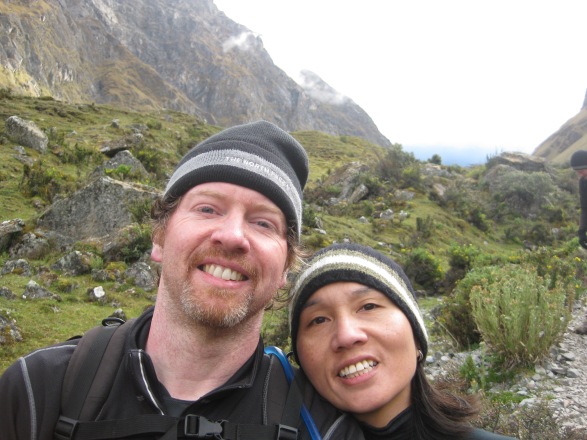Part VIII: Is this for me? The Lessons Learned and Trip Logistics
*This post originally appeared on the blog in early 2018…We have re-posted for the enjoyment of all during our ‘Summer re-runs” while Brian and Sylvia are in search of new adventures.
Can I walk to Machu Picchu, too?
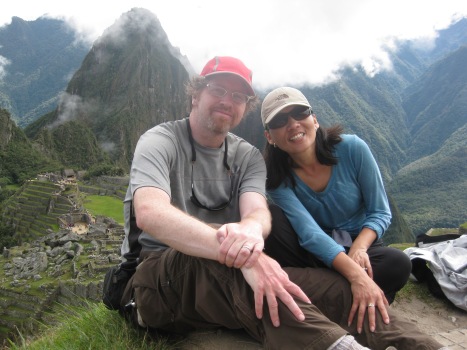
This may be the question you are asking yourself. The better question in my mind is, do you want to? If the answer to the second question is yes, then the answer to the first is likely to be yes as well. Here’s the rough outline of this trip, which Sylvia and I strongly recommend as a one in a lifetime experience:
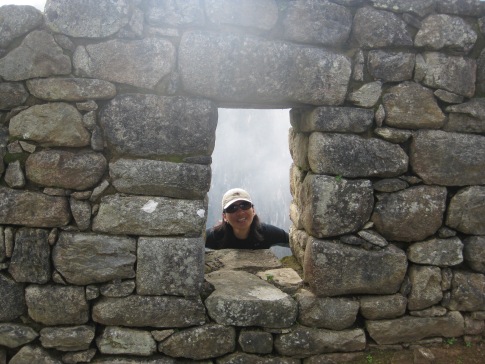
Machu Picchu by the Salkantay Trek Route
Highlights:
- One of the Best Hikes in Peru
- Considered by most credible sources to be scenically superior and less crowded than the Classic Inca Trail
- Much, much easier logistically to do this trail as opposed to the Classic Inca Trail (“Camino Inka.”)
- Recommended to all fit hikers who can tolerate high elevation
- Hike across gorgeous terrain to the western hemisphere’s most significant archeological site
- There is no place like Machu Picchu anywhere else on Earth
- Best season April-November; avoid the rainy season, December-March.
- Chance to see gigantic (20,000 foot) mountains up close
- Salkantay Pass, higher than Mt. Whitney!
- Hiking route itself generally easy, if you can deal with the altitude
- No technical equipment or training is required, you just walk
- If you go with a guided hike, meals and much of the gear is provided
- This can be (and has been) attempted independently
- Unique and fascinating history
- Cusco, with its history and ruins, is well worth seeing by itself
- Good introductory hike to other, more challenging Andean treks such as the Santa Cruz, Alpamayo and Ausangate
- Remarkable portal town of Aguas Calientes
- The fascinating culture of the Andean people
- Guides can in general be hired cheaply
- This area is not that remote; you could probably be evacuated in an emergency (though God knows what it would cost or how long it would take.)
- Area is generally safe for hiking
- Generally speaking, Peru is not expensive, though it has become more expensive lately
- Other options to consider for hikes to Macchu Picchu include the Lares Trek and Choquequira. Neither is less challenging than Salkantay; Choquequira is in fact considered to be the most difficult
Considerations:
- Altitude is a serious consideration here
- 2-3 days of acclimatizing in Cusco recommended
- Altitude affects people differently; even fit people can be wiped out by it
- Hard to know how altitude will impact you until it does
- 15,000+ ft Pass of Salkantay is higher than most Gringos will ever go
- In most commercial itineraries, the first day (Mollepata to Soraypampa) is LONG and tiring
- Some sections of the trail (Particularly the first day) are a road walk
- Minimum three days; five for full itinerary
- Note that if you do the four-day option with a commercial tour, some of this will be via bus/train
- Do the longer but more scenic option that goes via Llactapata if you can (we could not)
- On the Salkantay route you do NOT enter Machu Picchu through the famed Inti Punku (“Sun Gate.”) Missing this spectacular entrance to one of the world’s great places is perhaps the biggest downside of this hike
- Salkantay also bypasses some major Inca ruins such as Patallaqta and Runkuraqay
- If you are here largely for the Inca ruins, consider doing the Classic Inca Trail. There is only one of these on the Salkatay Trek but…it’s the big kahuna
- Machu Picchu itself, while spectacular, is very crowded
- It is possible that clouds will sock in the views at Machu Picchu
- Rain is likely; snow, possible
- Parts of this are in high jungle; be prepared for biting flies
- Snakes, tarantulas sometimes encountered (we saw none)
- Though not crowded compared to the Classic Trek, reports from recent years indicate that it has become more crowded
- On guided tours, it is sometimes difficult to figure out in advance what the guides will and won’t do, and what the exact itinerary will be
- Conversational Spain-talk necessary if you chose to go independent
- Most of this is NOT wilderness; many farms, villages, roads, people selling bottles of lukewarm Coke…
- Lots of up-close opportunities to view barnyard animals (goats, cows, pigs, chickens) and their poop
- All water not bottled MUST be treated or boiled
- SOME bathrooms are available en-route, but you might have to pay for the privy-lidge
- You might be able to do this hike lodge to lodge, sleeping in comfortable beds, but it will cost you
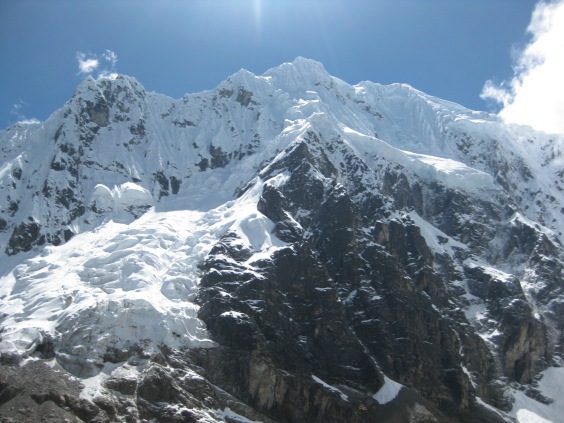
Before you go:
Sylvia and I did this hike as part of a guided tour in 2012, and the friendships we made and interactions with the others on that tour were part of the fun. We would also recommend you do this hike guided unless you are a very self-sufficient and experienced hiker who knows at least some degree of conversational Spanish. Doing this hike independently will be MUCH less costly, but it will also mean you will be responsible for your own meals, sleeping arrangements, transportation and safety. The routes are generally easy to figure out, and none of this crosses wilderness. Also, factor in the extra difficulty of crossing the high pass with the additional weight of tent, stove, supplies etc. Most people use a guide, as we did, and we personally feel more comfortable hiking in the Andes with a guide. But many people do in fact attempt, and finish, this trek entirely on their own.
If you want more information about independent trekking, the best places to start are the hiking blogs of Cam Honan and Rick McCharles, who have vast resources devoted to independent hiking.
What do I need to bring?
This is an excellent question. ? In every adventure we have planned in Peru, there has been some degree of disconnect between what the tour company told us via phone/email and what the guides told us once we were on the trail. Sometimes we were pleasantly surprised; other times, the surprises were less pleasant. Try to find out what, exactly the guides will be doing for you and what they won’t. Will they be providing ALL meals or just dinner? How about snacks? Will you have tents, or tents with sleeping pads, etc? Can any gear be sent ahead on the horses? And then of course, you must factor in that anything the tour company tells you may in fact be completely wrong.
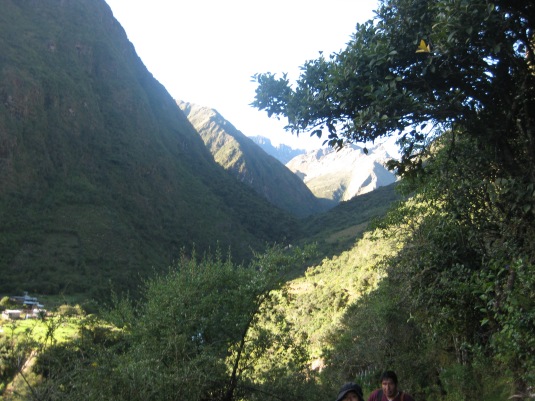
The following items are mandatory:
- Rain Gear
- Good boots
- Hydration system
- Pack (doesn’t have to be a full multi-day pack)
- Extra warm layers, including gloves and hat
- Sleeping bag (carry one even if the tour company says they provide one)
The following items are NOT mandatory, but are advisable:
- Water purification system
- Sleeping pad (Even if the tour company says they provide one….two won’t hurt)
- Snacks
- First aid gear (especially some sort of aspirin or ibuprofen)
- Camera/phone
- Charger for above
If you go with a tour, leave the following at home:
- Tent
- Stove
Expect to bring your wallet and enough cash to cover contingencies. Remember, they don’t accept all major credit cards in small Andean villages, and the guides must be tipped in cash (or with extra food, equipment.) Make sure it’s stored in a waterproof container and keep it secure. Also, if you are going to bring your mobile phone (almost compulsory these days) make sure it likewise stored in some sort of waterproof container or bag. Recall that for any electronics, you will need power, and a power outlet that conforms to western-style adapters…this may or may not be possible to find en-route, with a strong lean toward ‘not.’ I would strongly advise bringing some sort of charger. It would really suck to run out of juice for the camera on this hike.
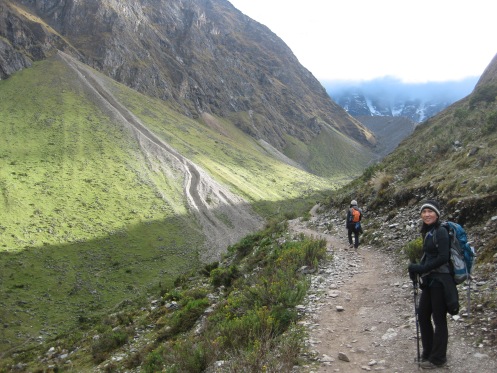
How can I get ready?
Do as much hiking as you can. If it is possible, try to do as much acclimatization as possible at high altitude. Note that for most of the people reading this, the previous sentence translates into “the impossible.” There is no high altitude hiking to be had east of the Rockies, so for three quarters of the US and lower Canada, that’s a non-starter. If you live in the UK or Ireland or Australia…same applies. You will need to do as much aerobic exercise and walking as possible, preferably off-trail with a pack of 15-20 pounds.
My own experiences with altitude have been mostly positive. I did become ill on this trip, but mostly because the first day was so very long that I went beyond my abilities. Keep that in mind when you go. On later trips, I had no issues (but Sylvia, much smaller in build than I, has had some.) Be wary that no matter how much training you do, every person reacts to high altitude differently, and it’s hard to know in advance who the bad ones are.
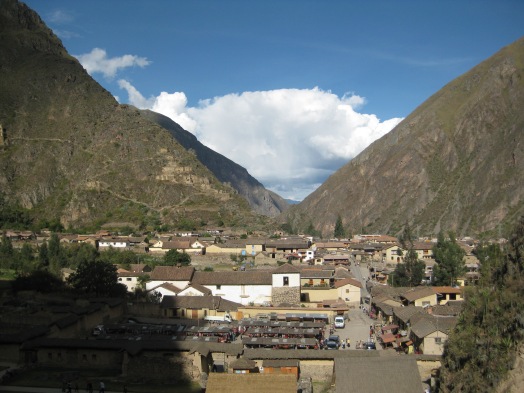
To prevent the onset of Acute Mountain Sickness:
- Be as fit as possible
- Train by walking and with cardio activities like running and aerobics
- Work on your leg strength, especially for the downhill
- If possible, train at altitude
- Acclimatize in Cusco as much as possible. Spend a few days there walking around
If things go bad on the trail:
- The early effects of altitude sickness are similar to those of dehydration so make sure you are drinking enough water
- Aspirin helps
- Coca leaves may help
- Consider bringing some sort of drugs for altitude sickness with you. These are available in Peru; we did bring some with us
- If the symptoms strike near the pass, that’s not so bad, you can fight through. But if they strike much lower down, they will just get worse as you go uphill. At a certain point, altitude sickness becomes debilitating, even dangerous
- Have a back-up plan available. Don’t try to cowboy up and hike on in extreme pain and discomfort. Horses can be hired. Seek the advice of the guide
- One sure thing about AMS: The only cure for it, once it strikes, is to go down
Finally, whether you go guided or not, I recommend you be able to speak at least conversation Spanish. I spoke what would generously be termed Tarzan Spanish, and this would have made the experience much less, but fortunately I had Sylvia along with me as a translator. Not only does the ability to speak to the locals enrich the experience, but it will serve as a common language that all the rest of the tourists will speak (all of the Europeans spoke Spanish as well as, or better than, they spoke English.) I would strongly recommend you learn to habla espanol or else end up el mudo like Gringo Grande.
So the answer to the question, “Can I Hike to Machu Picchu?” depends largely on yourself. I believe most people could do this hike if they want to. It won’t all be comfortable and fun, and sometimes there will be hassels and delays. But it will be far more memorable if you chose to do it this way as opposed to doing it out of a bus. I would strongly recommend that anyone who has the will to do so attempt the Salkantay Trek to Machu Picchu.
